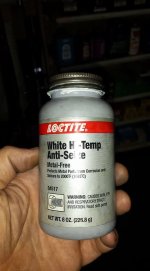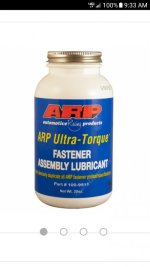I will mention a couple of things that relate to this thread but only to what it has evolved into. My early Viper's insert was thread milled, which gives it a different surface finish in the threads. It seems to me that a that two very smooth finishes have the greatest tendency to gall. I have used the grey Permatex, the common VersaChem, and on occasion (but not for the first application) Pro Shot Gold with no problems. The Viper's action threads are purposely slightly tapered to better distribute the load. They get slightly tighter to the back. I think that this is a good thing, and it is probably easier to make that way with a thread milled insert. Finally, with V type threads I see no reason for a close fit, as long as it is reasonable and safe. I am finally to the point where I will be ordering a lathe in the next three months and my intention is to make test tenons for the practice, but also to try in any action that I rebarrel. I will want to make these from a material that cannot gall in a stainless action. What material would you suggest?



